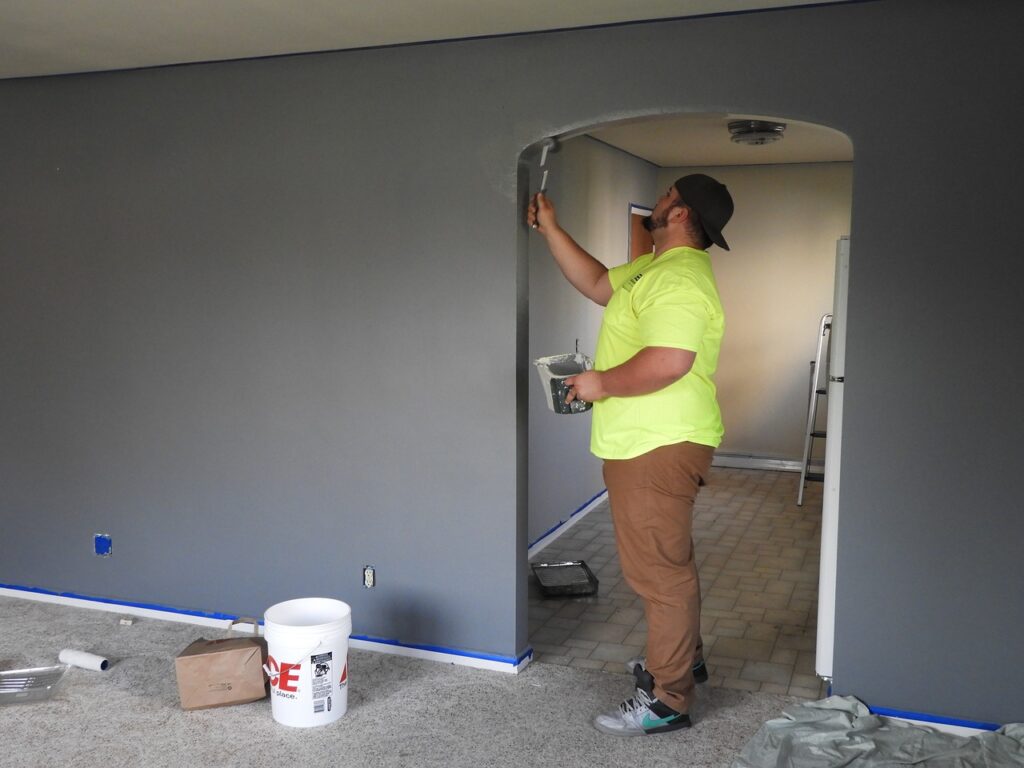Moving into a charming heritage home, I was quickly confronted by the reality of its cramped and dated bathroom. Eager for an upgrade, I optimistically budgeted $15,000 for the renovation work—only to discover that the final bill would soar to an eye-watering $27,000. My experience is far from unique; the world of home renovations is rife with stories of budgets stretched and expectations overturned.
How much do home renovations really cost?
In 2019, statistics revealed that 49% of Canadians intended to revamp their homes, setting aside an average of $10,211 for the task. However, nearly 40% of these hopeful renovators found themselves overspending. This article aims to shed light on the true cost of home renovations, offering insights into what drives up expenses and how to plan effectively for a successful and financially sound project.
Reasons for Renovating
Homeowners embark on renovation journeys for a myriad of reasons, but typically, these reasons fall into two broad categories: personal fulfillment and financial pragmatism.
For those, like me, who see their homes as long-term sanctuaries, renovations serve a pivotal role in molding their living space to reflect personal tastes, enhance comfort, and support their lifestyle. Committed to the idea of ageing in place, these homeowners invest in customization, seeking to transform their environment into a more functional and aesthetically pleasing abode.
On the flip side, financial considerations can make a compelling case for choosing to renovate rather than relocate. When faced with the hefty costs associated with buying a new property — land transfer taxes, realtor fees, mortgage penalties, and moving expenses — some homeowners find that the math leans heavily in favor of upgrading their current residence. As noted by the Canadian interior designer Krista Salter, for many, the expense of refurbishing can actually balance out when compared to the costs of upsizing to a larger home.
Furthermore, strategic renovations can lead to a significant increase in the property’s value, a concept commonly referred to as return on investment (ROI). For instance, updating a bathroom or kitchen may recoup between 75% to 100% of the renovation costs through an elevated home valuation. The prospect of such financial gain can turn a renovation project into a lucrative investment rather than a mere expense.
Starting Points for Renovation

Determining where to begin with home renovations can significantly impact both the enjoyment of your home and the eventual return on investment. Here’s a guide to help prioritize projects:
Evaluate High-Value Projects
According to experts, the best starting points are the renovations that historically offer the most significant return on investment. Kitchens and bathrooms, in particular, are known to have the potential to recoup a large portion of the costs when selling a home. These areas are pivotal in potential buyers’ decisions, often tipping the scales in favor of one property over another.
Consider Market Appeal
It’s not just about what you want; it’s also about what future buyers might look for. Simple and universally appealing updates, such as interior and exterior painting, can refresh the look of your house for a relatively low cost. Decluttering and updating décor can also swiftly elevate your home’s appeal without a major investment.
Beware of Overcapitalizing
Renovating beyond what the market can bear, known as “over-improving,” is a common pitfall. Not every neighborhood will reward your investment in a high-end chef’s kitchen or a custom-built wine cellar. Align your renovations with the standards of your community to avoid investing in features that are unlikely to increase your home’s resale value.
Assess the Condition of Your Home
Initial inspections might reveal urgent “911” repairs, such as structural issues or outdated electrical wiring. Addressing these should take priority, as they are critical for the safety and longevity of your home. These necessary repairs may not be glamorous, but they lay the groundwork for future renovations and prevent potential disasters.
Research and Plan Carefully
It’s essential to perform due diligence before diving into any renovation project. Research what’s currently trending in the real estate market and consider how those trends apply to your neighborhood. Make informed decisions by understanding what future buyers might value and by tailoring your renovation plans to fit the market. This strategy will ensure you are investing your money wisely and increasing the chances of a favorable return on your renovation investment.
By concentrating on these starting points and carefully considering each decision’s financial impact, homeowners can make savvy choices that boost their property’s value and provide personal satisfaction.
Understanding Renovation ROI
Renovations can be a substantial financial undertaking, but understanding the potential return on investment (ROI) can help you make decisions that balance personal preferences with the economic value to your home.
ROI Considerations
- Data and Statistics: Referencing data from sources like The Globe & Mail and the Ontario Securities Commission can illuminate the typical ROI for various types of renovations.
- Equity Enhancements: Certain updates, particularly in kitchens and bathrooms, have been shown to bring significant increases in home value, often allowing homeowners to recoup a substantial portion of their investment upon sale.
- Market Variability: ROI is not a one-size-fits-all calculation; various factors such as location, current market trends, and the general state of the economy can influence the return you can expect from your renovation.
Strategic Renovations
- Essential Repairs: Addressing critical repairs, although not always glamorous, can prevent value depreciation and are often necessary before making cosmetic upgrades.
- Functional Improvements: Enhancements that improve the functionality and efficiency of your home, such as upgrading to energy-efficient appliances or improving insulation, can offer long-term savings and appeal to environmentally-conscious buyers.
- Aesthetic Updates: While these may not have the same immediate impact on value as more substantial renovations, they can still contribute to a faster sale and better sale price.
Maximizing ROI
- Budget-Smart Choices: Making informed choices about where to allocate funds can maximize the ROI. High-quality finishes in a kitchen may offer a better ROI than the same level of spending in a less impactful part of the house.
- Avoiding Overcustomization: Highly personalized renovations might suit your tastes but could limit your home’s appeal to broader market preferences. Keeping improvements neutral and appealing to a wide audience can aid in ROI.
- Professional Assessments: Consult with real estate professionals or home appraisers to get an idea of which renovations might have the best payoff for your particular home and area.
Understanding the nuanced aspects of renovation ROI allows homeowners to make savvy decisions, ensuring that their projects not only meet personal needs and desires but also contribute positively to their home’s market value.
Factors Influencing Renovation Costs

The cost of home renovations can be influenced by a multitude of factors. Understanding these can help you set a more accurate budget and prepare for the unexpected expenses that so often characterize remodeling projects.
Age and Condition of the Property
Older homes may come with hidden complications such as outdated electrical systems, plumbing issues, or structural concerns that need to be addressed to meet current building codes. These unexpected discoveries can quickly inflate the cost of renovations.
Size and Scope
The larger the space or the more comprehensive the renovation, the higher the costs will be. Simple updates in a small bathroom will cost significantly less than overhauling a sprawling kitchen. Accordingly, the scope of your project—whether it’s a cosmetic refresh or a full-scale remodel—will have a direct impact on your budget.
Labor Quality and Expertise
The personnel you choose for your renovation can greatly affect the overall cost. Hiring experienced, insured professionals may come with a higher upfront cost compared to hiring a local handyperson or attempting a DIY approach, but it can save money in the long run by reducing the risk of costly mistakes and ensuring the longevity of the renovations.
Complexity of Renovations
The technical difficulty of the work involved, such as removing load-bearing walls, rearranging plumbing or electrical systems, or adding new extensions, can significantly drive up costs. These tasks often require skilled professionals and may also necessitate additional permits and inspections.
Timeframe
If you need the project finished quickly, it may cost more as contractors might have to expedite orders or work overtime. On the other hand, if you’re planning to sell your home, you might opt for quick and less expensive improvements that can still give your home a fresh look.
DIY vs. Professional Services
Taking on renovations yourself can save on labor costs but requires a significant time investment and a certain level of expertise. Weigh the potential for savings against the risk of DIY errors and the value of professional craftsmanship.
Quality of Fixtures and Finishes
The materials you select—from a basic bathtub to luxury fixtures—will impact your budget. Higher-end materials and custom work cost more, so decide where to splurge and where to save based on what’s most important to you and the potential ROI.
Additional Expenses
Don’t overlook the cost of design services, building permits, and potential costs for temporary accommodations if the renovations are extensive. Also, it’s wise to include a contingency fund—commonly suggested to be 20% to 25% of your budget—to cover unforeseen issues that arise during the renovation process.
By considering each of these factors carefully when planning your renovations, you can develop a more comprehensive and realistic budget that accounts for the complexities of home improvement projects.
Budgeting for Renovations
Creating a realistic budget for home renovations is essential to ensure that expenses don’t spiral out of control. Here’s how to establish a financial plan that keeps you on track and prepares you for both expected and unexpected costs.
Establishing a Baseline
- Percentage of Home Value: A standard rule of thumb is to allocate 1% of your home’s current market value each year for maintenance and improvement projects. For a $500,000 home, this means setting aside $5,000 annually.
- Long-Term Planning: For major renovations, consider saving a set amount in a high-interest savings account (HISA) over time to fund your projects. This minimizes the need for financing and the accompanying interest payments.
- Market Research: Adjust your budget according to the local real estate market and typical renovation costs to avoid overcapitalizing.
Cost Breakdowns by Project
- Kitchen Renovation: Generally, budgeting up to 15% of your home’s value is advisable, with 25% being the cap for “forever homes.”
- Bathroom Renovation: Aim for up to 5% of your home’s value to cover updates to fixtures, plumbing, and finishes.
- Painting: Costs can vary, but planning between $1 to $1.50 per square foot can guide you in allocating funds for professional painting services.
- Basement Renovation: Depending on the extent of the overhaul, costs can range significantly. Basic updates may start at a few thousand dollars, while complete transformations could run as high as $50,000 or more.
Contingencies and Extras
- Emergency Fund: Experts recommend adding a 20% to 25% buffer on top of your initial budget to handle any surprises or unforeseen expenses that inevitably arise during renovations.
- Additional Expenses: Account for potential costs that are often overlooked, such as design fees, permits, or even dining out more frequently if your kitchen will be out of commission.
Regular Review and Adjustments
- Monitoring Spending: Keep a close eye on your expenses as the renovation progresses, adjusting your budget as necessary.
- Value Engineering: Work with your contractor to find cost-saving alternatives that do not compromise the quality and outcome of your project.
By diligently researching, planning, and saving towards your renovation goals, you can approach your home improvements with financial confidence, knowing you are prepared to cover both the anticipated and the unforeseen expenses that come with revitalizing your living space.
Financing Home Renovations

Not every homeowner has the luxury of a well-padded savings account ready to fund a major home makeover. It’s essential to explore the various financing options available to ensure that your renovations are both manageable and sustainable from a financial perspective.
Savings: The First Port of Call
- Utilize Existing Savings: Drawing from savings to finance renovations avoids interest fees and encourages discipline in saving for specific goals.
- High-Interest Savings Accounts (HISA): Parking your funds in a competitive HISA while saving for renovations can earn you a small return in the meantime.
Personal Loans: When Additional Funds Are Necessary
- Loan Shopping: Use comparison platforms to find the best rates and terms for personal loans that fit the scale of your renovation needs.
- Credit Score Impact: Ensure your credit score is optimized before applying for a loan, as it significantly affects the interest rate you will be offered.
Mortgage Refinancing: Leveraging Home Equity
- Cash-Out Refinancing: This option allows homeowners with substantial equity to refinance their mortgage for a higher amount than they owe, using the difference to fund renovations.
- Interest Rate Considerations: Refinancing is particularly attractive if current mortgage rates are lower than when the original mortgage was secured.
Credit Cards: A Short-Term Solution
- Balance Transfer Cards: Some credit cards offer low interest rates on balance transfers for a promotional period, which might be suitable for small or short-term renovation financing.
- Rewards and Cashback: Using a credit card for renovation expenses could earn significant rewards or cash back if the balance can be paid off quickly.
Government and Energy Efficiency Incentives
- Grants and Rebates: Investigate local government and utility company programs that offer incentives for energy-efficient renovations.
- Long-Term Savings: Energy-saving renovations might have higher upfront costs but can result in long-term savings on utility bills.
Smart Financing Strategies
- Plan Ahead: Begin planning and saving well in advance of your renovation project to reduce the need for debt financing.
- Budgeting Tools and Apps: Leverage modern financial tools to forecast and track your renovation budget accurately.
- Minimize Borrowing Costs: When borrowing is necessary, choose options that minimize interest and fees, such as low-interest loans or refinancing.
Financing home renovations requires a balanced approach that considers both current financial capabilities and future impacts. By saving strategically, understanding the costs involved, and exploring various financing options, homeowners can navigate the complexities of funding their renovations in a way that aligns with their financial health and home improvement goals.
Conclusion
The journey of renovating a home can be as daunting as it is exhilarating, often laden with unexpected twists and financial considerations. As we’ve seen, the true cost of home renovations extends beyond mere dollar figures; it’s a composite of planning, knowledge, and strategic decision-making. Understanding the multitude of factors that influence renovation expenses—from the scope of the project to the quality of materials—is crucial for setting realistic expectations and budgets.
No matter the scale or purpose of your home improvements, whether it’s for personal enjoyment or to increase market value, the key lies in thoughtful preparation and smart financial planning. Prioritizing high-return projects, avoiding over-improvement, and preparing for the unforeseen with a contingency fund can make all the difference between a successful renovation and a financial misstep.
For financing, the best strategy is often a combination of diligent saving and careful borrowing, using tools like high-interest savings accounts, loan comparison sites, and taking advantage of government incentives for specific upgrades. With a comprehensive financial plan in place, homeowners can better manage the renovation process, ensuring that the investment enhances both the quality of their living space and the value of their property.
In conclusion, while the costs associated with home renovations can be significant, the rewards—when managed wisely—can be even greater. It’s about more than just transforming a space; it’s about investing in your home’s future and, by extension, your own.






